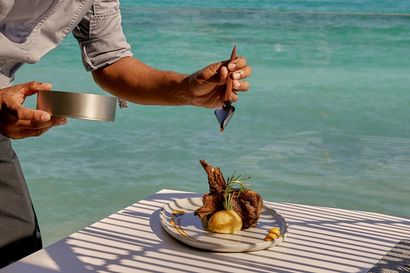If it were possible to anthropomorphise the City of Bath, I imagine you’d be presented with a figure not unlike Audrey Hepburn. Agelessly elegant, magnetically beautiful, and damn near impossible to take a bad photo of (even in the October rain). Founded in the 1st Century by the Romans as a thermal spa, Bath’s extraordinary array of architectural treasures has earned the whole city Unesco World Heritage Site status, and for many it is a place synonymous with the regency charm of Austen’s novels.
However, like all great European cities, Bath is more than the sum of its tourist-trodden parts. There is pomp and grandeur aplenty, yes, but for every tier of afternoon tea sandwiches, there is an experimental chef cooking up a storm on the outskirts of town — and for every bonnet-clad museum guide, a cobbled side street waiting to be discovered. So, if you’re looking for the perfect weekend escape, not two hours from London, read on for our insider’s guide on where to stay, what to see, and — of course — where to wine and dine.
Where to stay: Royal Crescent Hotel & Spa
Joan Didion once said hotels “have always been social ideas, flawless mirrors to the particular societies they service.” And, while we recognise that styling this as an ‘insider’s guide’ before recommending one of the UK’s most iconic hotels as the place to stay might seem counter-intuitive; there is quite simply no place which better encapsulates the spirit of Bath than the Royal Crescent Hotel & Spa.

Duke of York Suite, Royal Crescent Hotel & Spa
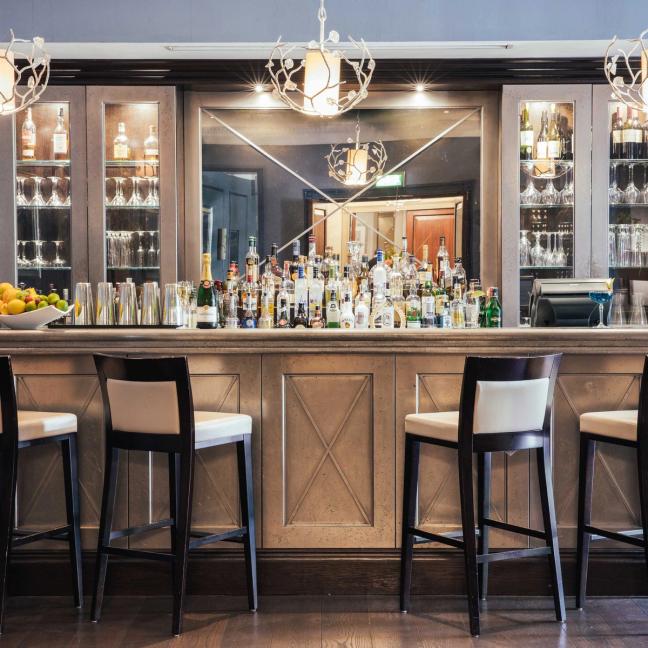
The Montagu Bar & Champagne Lounge
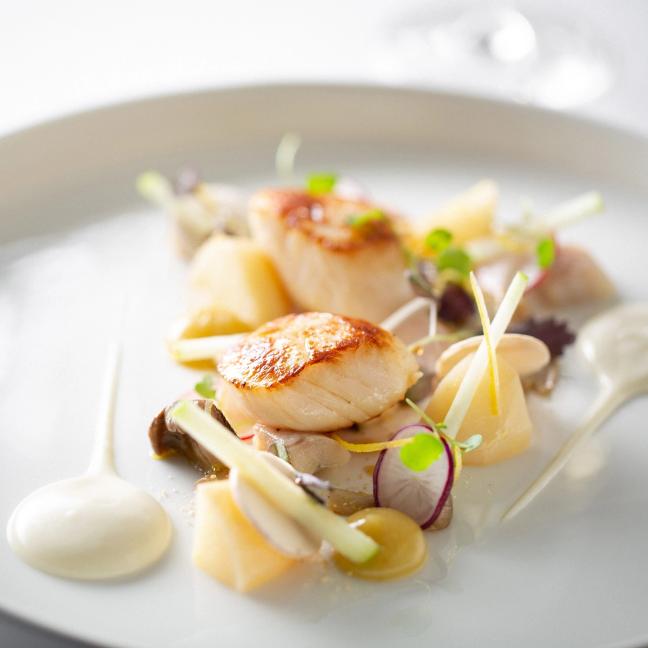
The Dower House Restaurant
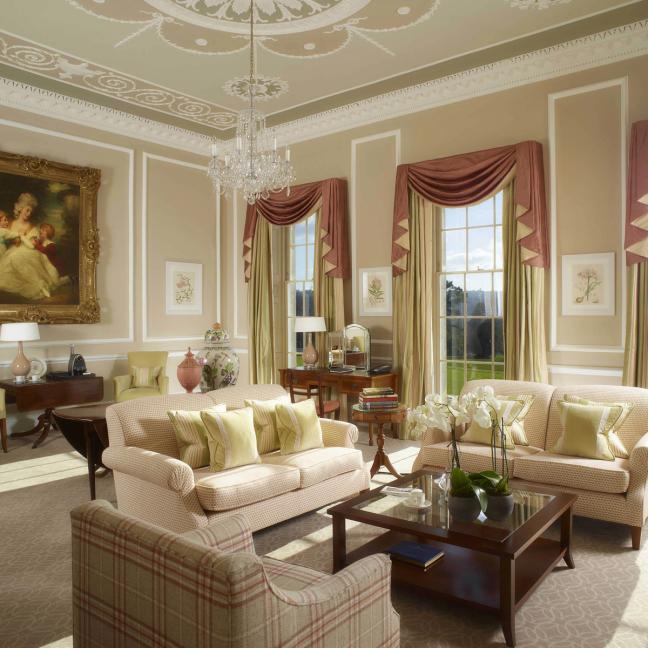
The Sir Percy Blakeney Suite
Sitting resplendently in the centre of the iconic Royal Crescent and housed in a 250-year-old Georgian listed building, the hotel affords sweeping views across the city. No two rooms of the 45 available are the same, although each has been afforded the same Georgian detailing and traditional decor. But, if you’re looking to experience the best the hotel can offer, opt to stay in one of its 11 magnificent suites. Combining old world elegance with modern luxury, the deluxe suites offer stunning views over the private, lavender-laden gardens or the Royal Crescent lawn.
Over the years, the adjacent coach houses, stable blocks and mews properties have been drawn in to service the hotel, and now house the restaurant, bar and spa. On which note, dinner at the Dower House restaurant is a thing of true beauty. Under the guidance of Executive Head Chef David Campbell, the menu bills itself as combining classic dishes with a unique contemporary twist. Perhaps the dish that best fulfils this promise is the duck egg starter, which ambitiously incorporates a ‘full English breakfast’, comprised of iberico ham, tiny cubes of black pudding and winter truffle.

The Garden Villa

The Bath House
A special mention must also be given to the roasted sea bass, which comes served with seared scallops, smoked eel, wild dandelion leaf and horseradish. Perhaps not the place to head for an eclectic array of vegetarian options, but sure to delight 2019’s remaining carnivores. Take advantage of the restaurant’s sommelier, Jean-Marc Leitao, who paired our (rather eclectic) meal with a bottle of excellent Santa Julia High Altitude Vineyards Chardonnay.
Of course, no stay here is complete without a visit to the hotel’s award-winning Spa & Bath House. Offering a host of decadent, soothing treatments, alongside a 12-metre heated relaxation pool, vitality pool, sauna, steam inhalation room and fitness room — you’ll not so much walk out of the hotel’s converted old coach house, as float.
Where to eat: Menu Gordon Jones
The maxim goes that you should never judge a book by its cover, but I have always found that an excellent barometer for separating the wheat from the chaff in fine dining is to pay close attention to the playlist. At Menu Gordon Jones, this weighty musical responsibility falls upon the chef whose name adorns the restaurant’s (remarkably modest) exterior. The soundtrack here is an incongruous, joyous and entirely unpredictable medley. You’ll find no commercially-oriented crossover jazz or soothing piano sonatas here — instead, Miike Snow’s Genghis Khan is followed by Outkast’s Roses — at one point, the entirety of the staff (and at least half of the diners) are caught up in a rousing rendition of Mr. Brightside.
It all seems perfectly fitting for a restaurant whose USP is an entirely unpredictable menu (the tagline here reads “let the chef surprise you”). Surely a welcome novelty in what I am dubbing the Age Of Allergies, picky eaters ought to be fairly cautioned here — Menu Gordon Jones takes your mum’s wearily-repeated “you’ll get what you’re given” to a whole new level. Managing to secure a highly-coveted booking for lunch (you’re looking at a months-long waiting list for dinner here), we skipped breakfast, shrugged off any preconceptions, and prepared to be swept up in the magic.
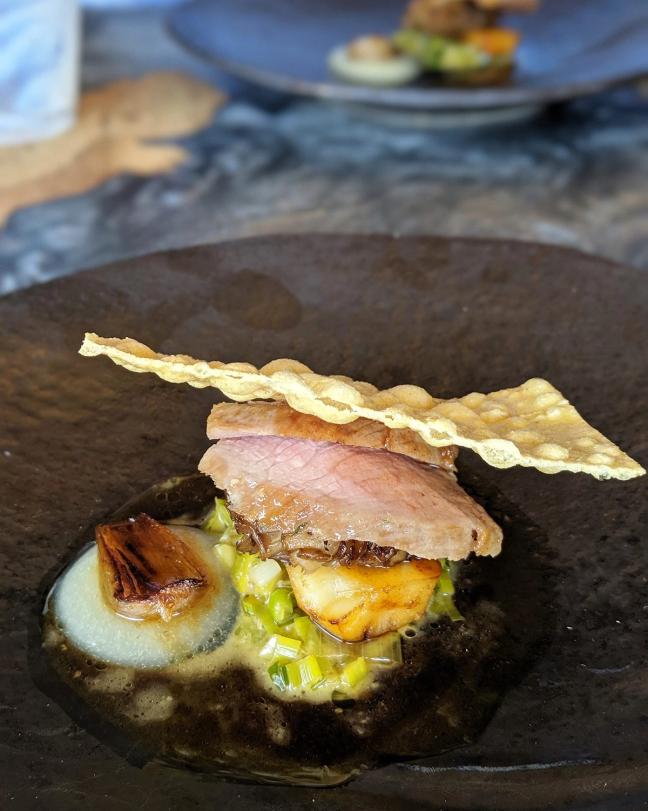
Iberico pork secreto, hen of the wood mushrooms, chervil roots, leeks

Barley ice cream, Foie Royal, praline, chocolate, banana bread
There are not enough hyperboles at my disposal to describe this extraordinary place but suffice to say I would urge anyone to book in for the Wine Flight pairing menu. Entirely discordant flavours meet in perfect harmony right from the first course — titled ‘The Bread Experiment’— in which we were treated to a cumin and chocolate bread, served with test tubes of oil and vinegar, snail fritters and Bloody Mary butter.
The surprises keep on coming — Cornish squid coleslaw with melon sorbet is offered up with no utensils aside from a pair of chopsticks (“I just get a kick out of watching you all struggle!” bellows Gordon himself, from his vantage point in the kitchen, and I’m not convinced he’s joking). Barley ice cream makes an unlikely bedfellow with shavings of Foie Gras atop a moist slice of banana bread, and each of our six courses come paired with an impressive assortment of wines. It might be hidden unassumingly in an unfashionable backwater of a desperately elegant city, but make no mistake — this is the gastronomic jewel in a city saturated with excellent dining options. Book well in advance to avoid disappointment.
Where to get a culture fix: Roman Baths
In typically ostentatious style, the Romans built a bathhouse complex above Bath’s 46°C hot springs when they discovered the source. Set alongside a temple dedicated to the healing goddess Sulis-Minerva (a hybrid deity, we learn on a guided tour, of the Celtic goddess of healing, Sulis, and the Roman goddess of wisdom, Minerva), the baths now form one of the world’s best-preserved ancient Roman spas.
No fewer than 1,170,000 litres of steaming spring water still fills the bathing site every single day — which has a lead-lined pool filled with geothermally heated water from the so-called ‘Sacred Spring’ at its centre. Digital reconstructions pop up around the complex featuring projections of bathers and offer effective insights into what life looked for bathers who took dips here before we learned that lead poisoning was a thing.

Photo Courtesy of Visit Bath
There is also a fascinating museum displaying artefacts discovered on the site. Look out for the famous gilded bronze head of Minerva and a striking carved gorgon’s head, as well as some of the 12,000-odd Roman coins thrown into the spring as offerings to the goddess.
In what might be considered the Romans’ answer to a cure-all green juice, visitors here can also sample the distinctly sulphuric waters generated by the 10,000 year old natural spring. Believed by the Victorians to have curative powers, its effects now would seem mostly to consist of a lingering egg-like smell and placebo-effect wobbly tummy — but it’s absolutely worth it for bragging rights. And, who knows, they might have been onto something.
Where to unwind: Thermae Bath Spa
Wellness might now be thought of as an entirely millennial concept — but spa-dom in Bath dates back as far as 863 BC, when the legendary Prince Bladud is said to have taken a dip in one of its hot springs and found he was cured of leprosy. Since then, everyone from the Celts, Romans, Saxons, Georgians and Victorians have visited the city in search of a cure for their ailments.
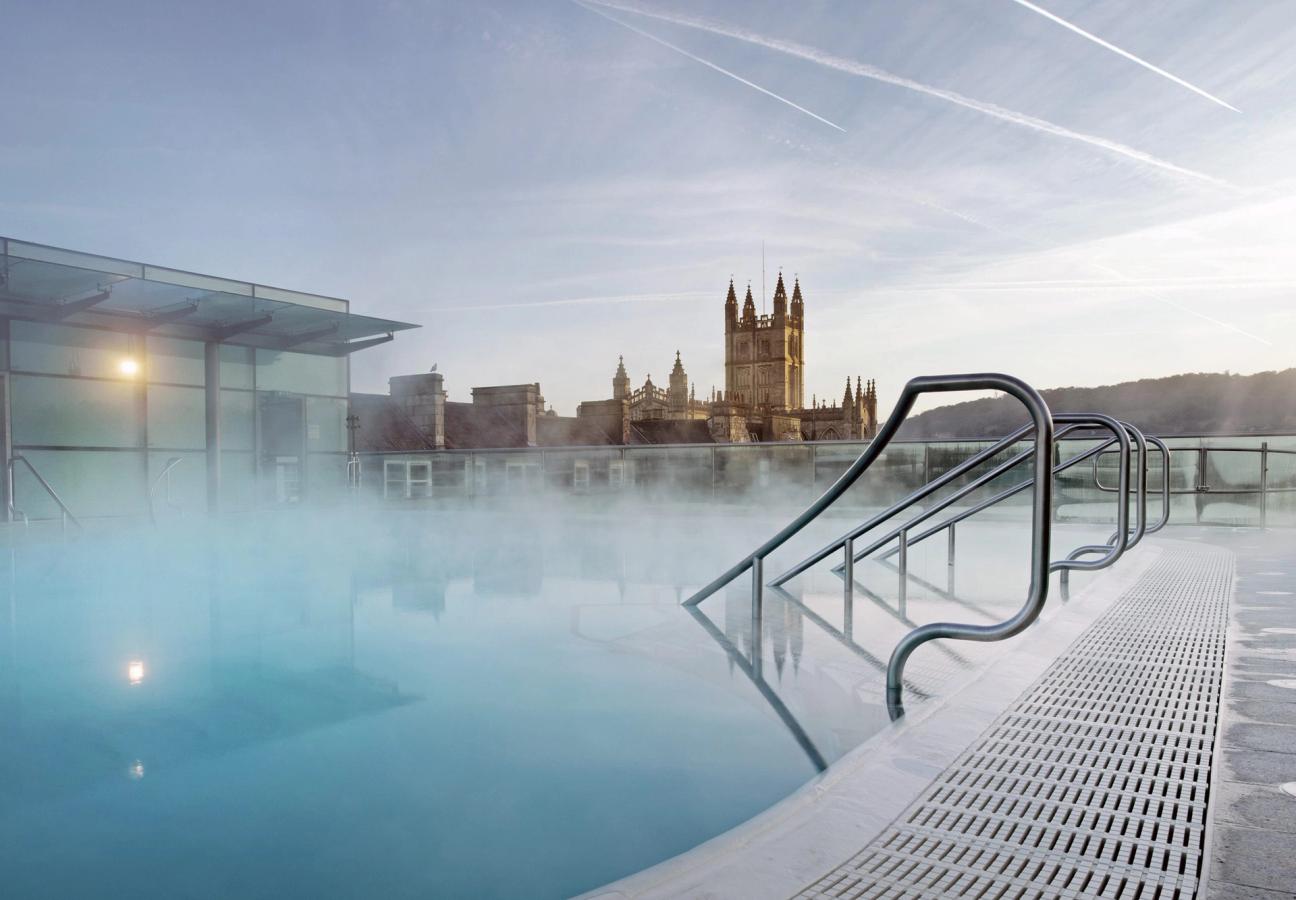
Photo courtesy of Visit Bath
The Thermae Bath Spa sits in the city centre, built around the city’s natural hot springs to create a spa in the original sense of the word. The two separate spa buildings house the Cross Bath, where the natural spring rises to the surface, and the New Royal Bath, where you can find the modern pools and thermal facilities. Many of the treatments make use of the natural thermal waters, and both the spa days and treatments are pleasingly affordable. Don’t miss the dramatic rooftop pool, where you can enjoy views across the city while you swim.
During holiday seasons or weekends, queues here will regularly snake around the block; so be sure to go early or late to make the most of this unique spa.
If you have the time: Our recommendations
If you’re lucky enough to have more than a couple of days at your disposal, allow us to recommend a few of our favourite lesser-known haunts and hot spots in the area:
LIVE MUSIC HUB: The Bell Inn
The Bell is a historic free house and music pub on the edge of Bath city centre. Step inside, and you’ll find its walls covered in posters from a diverse array of live music acts, who play over the two sound stages. A genuine, old-school community pub, The Bell is owned by around 500 of its customers, fans and workers under IPS CoOperative rules. 103 Walcot Street (thebellinnbath.co.uk)
TO MARKET: Green Park Station
This domed glass building, which was previously a train station, is now home to Bath’s various markets, where you’ll find excellent local produce. Look out in particular for Jamie Oliver’s favourite, Tom Calver, selling his Westcombe Cheddar here on Saturday mornings, as well as bi-monthly vintage and antiques markets. (greenparkstation.co.uk)

Stourhead National Trust Property
BEST COFFEE IN BATH: Colonna & Small’s
Home to the 2012 and 2014 UK Barista Champion, this coffee shop does not mess around when it comes to serving up your daily grind. Here, you’ll find that coffees appear on the menu, from a variety of countries, if they are in season and display a speciality flavour. Coffees change weekly and are sourced from the country’s leading roasteries — not the place to head if you’re trying to cut down your caffeine. 6 Chapel Row (colonnaandsmalls.co.uk)
GET OUT OF TOWN: Stourhead National Trust Property
Eagle-eyed Austen fans will recognise this extraordinary National Trust property for its appearance in the 2005 adaptation of Pride & Prejudice, in a scene mostly memorable for the sheer amount of rain. Just an hour’s drive from Bath’s city centre, visitors here can take in the spectacular Palladian house and world-famous landscaped gardens. Mere, Wiltshire, BA12 6QD; (nationaltrust.org.uk/stourhead)
Looking for more travel guides? These are the best European destinations for autumn sun…

Become a Gentleman’s Journal Member?
Like the Gentleman’s Journal? Why not join the Clubhouse, a special kind of private club where members receive offers and experiences from hand-picked, premium brands. You will also receive invites to exclusive events, the quarterly print magazine delivered directly to your door and your own membership card.


